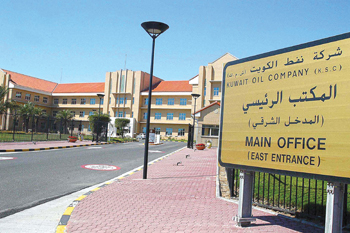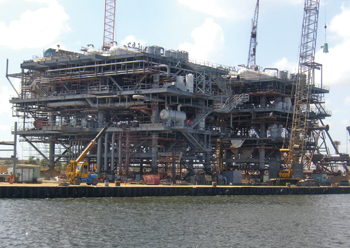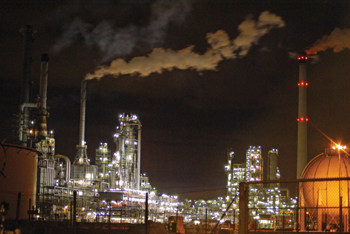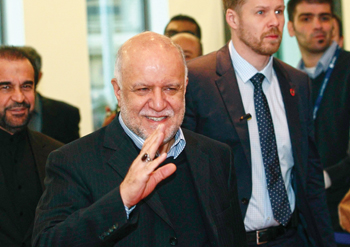
 Khafji ... resuming operations
Khafji ... resuming operations
Production at Khafji, which pumped over 300,000 barrels per day (bpd) and was jointly operated by the two countries, was halted in October 2014
Saudi Arabia and Kuwait have reached a deal to resume production at the disputed Khafji offshore oilfield, Kuwait’s acting oil minister says.
'An agreement has been reached with the Saudi side at Aramco to resume production at Khafji field in small quantities,' Anas Al-Saleh says.
Saleh, who is also the finance minister, says the quantities will increase 'gradually' after resolving environmental issues over which the field was shut down.
A number of maintenance contracts have been signed in preparation for the resumption of production, the minister said without saying when production will resume or how much oil will be pumped.
Production at Khafji, which pumped over 300,000 barrels per day (bpd) and was jointly operated by the two countries, was halted in October 2014. Riyadh cited environmental issues for the shutdown.
Khafji is part of the neutral zone which is operated jointly by the two Arab nations and production is divided equally.
The other field is Wafra where production was also halted in May last year. Wafra pumped around 200,000 bpd.
Kuwait had initially said that Saudi Arabia unilaterally stopped production due to pollution concerns even though it was entitled to five years’ notice under the joint agreement.
The two Gulf neighbours began talks in June to resolve the dispute.
Khafji is jointly operated by Kuwait Gulf Oil Co (KGOC) and Saudi Aramco Gulf Operations, while Wafra is operated by KGOC and Saudi Arabian Chevron.
Industry sources say Kuwaiti authorities were unhappy with Saudi Arabia for renewing an operating agreement for the Wafra field with Saudi Arabian Chevron for 30 years in 2009 without consulting them.
In response, it stopped issuing or renewing visas for Chevron foreign employees.
The dispute has been a blow to Kuwait which, unlike its much larger neighbour, has little spare output capacity to compensate for drops in production.
Kuwait is pumping around 3.0 mbpd.
The row has its roots in Saudi Arabia’s 2009 decision to renew US major Chevron’s operating agreement for the kingdom’s 50 per cent interest in the onshore Neutral Zone for another 30 years.
Kuwait says it should have been consulted on this decision, as it is planning to build its long-delayed Al-Zour refinery on land presently used by Chevron.
The refinery’s location was chosen based on its proximity to the Al-Zour power plant that will use the facility’s low-sulphur fuel oil output. The dispute has taken a while to come to the boil, but flared up late last year when Riyadh unilaterally halted operations at Khafji because of environmental concerns, and Kuwait began refusing to renew visas for Chevron employees or clear imports of equipment.
In a further escalation of the dispute, Kuwaiti daily Al-Rai had published a leaked letter from the then Oil Minister Ali Al-Omair to his Saudi counterpart Ali Naimi, in which he called on Riyadh to resume joint production from the Khafji field as 'continuing with production and export halts will incur the State of Kuwait heavy losses, which the Saudi government will bear for violating Article VI of the partition agreement, as well as operating agreement for the year 2010.'
The dispute is particularly costly for Kuwait, which risks losing market share to Saudi Arabia and other producers at a time when Opec has made market share a priority.
The shutdown had compromised Kuwait’s near-term objective of sustaining output at 2.9 mbpd, and looking further ahead. Kuwaiti oil output has been below 2.9 mbpd in recent months, according to its submissions to the Joint Organization Data Initiative, slipping to 2.83 mbpd in last May from 2.86 mbpd in April. The Neutral Zone shutdown also came at a time when both Kuwait and Saudi Arabia are facing peak seasonal domestic demand for their oil to meet summer power generation requirements.For Saudi Arabia, the Neutral Zone dispute is clearly much less of a problem.






































































